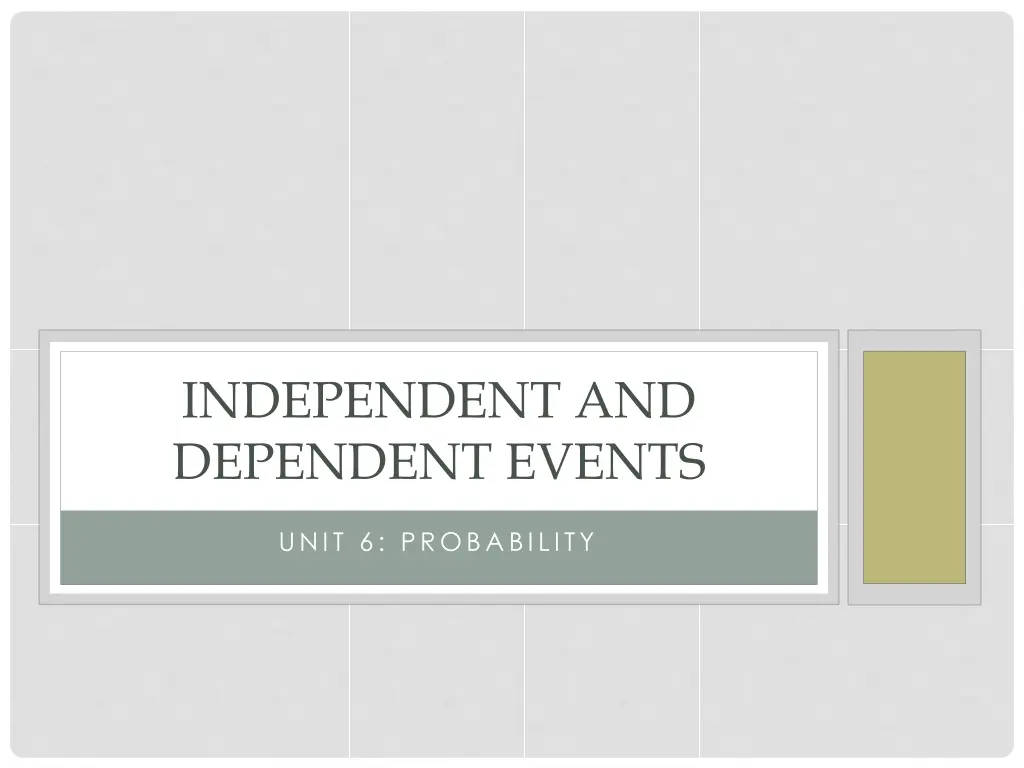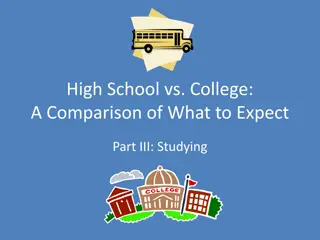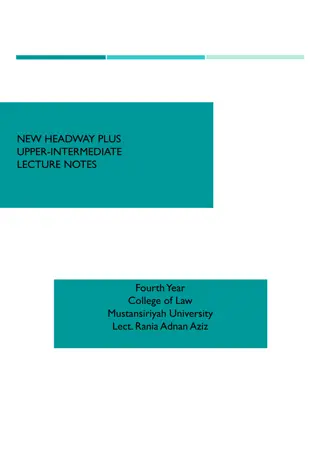
Understanding Independent and Dependent Events in Probability
Learn about independent and dependent events in probability, distinguish between the two, and solve problems involving these concepts. Discover how events can affect each other's probabilities and explore real-world scenarios to enhance your understanding.
Download Presentation

Please find below an Image/Link to download the presentation.
The content on the website is provided AS IS for your information and personal use only. It may not be sold, licensed, or shared on other websites without obtaining consent from the author. If you encounter any issues during the download, it is possible that the publisher has removed the file from their server.
You are allowed to download the files provided on this website for personal or commercial use, subject to the condition that they are used lawfully. All files are the property of their respective owners.
The content on the website is provided AS IS for your information and personal use only. It may not be sold, licensed, or shared on other websites without obtaining consent from the author.
E N D
Presentation Transcript
INDEPENDENT AND DEPENDENT EVENTS UNIT 6: PROBABILITY
WARM UP Students in a mathematics class pick a card from a standard deck of 52 cards, record the suit, and return the card to the deck. The results are shown. a) How many students are in the class? b) What fraction of the students chose a red card? c) Does your result for part b) make sense? Explain.
TODAYS OBJECTIVE Students will distinguish between events that are dependent and independent and solve probability problems involving these events.
INDEPENDENT AND DEPENDENT EVENTS Independent Events: Two events are said to be independent when one event has no affect on the probability of the other event occurring. Dependent Events: Two events are dependent if the outcome or probability of the first event affects the outcome or probability of the second.
DETERMINE WHETHER THE EVENTS ARE INDEPENDENT OR DEPENDENT: 1. Selecting a marble from a container and selecting a jack from a deck of cards. Independent 2. Rolling a number less than 4 on a die and rolling a number that is even on a second die. Independent 3. Choosing a jack from a deck of cards and choosing another jack, without replacement. Dependent 4. Picking a red marble from a bag and then picking a blue marble, without replacement. Dependent
EXAMPLE 1 Suppose a die is rolled and then a coin is tossed. Are these events dependent or independent? They are independent because the outcome of rolling a die does not affect the outcome of tossing a coin, and vice versa. We can construct a table to describe the sample space and probabilities: Roll 1 Roll 1 1,H Roll 2 Roll 2 2,H Roll 3 Roll 3 3,H Roll 4 Roll 4 4,H Roll 5 Roll 5 5,H Roll 6 Roll 6 6,H Head Head Tail Tail 1,T 2,T 3,T 4,T 5,T 6,T
Roll 1 1,H 1,T Roll 2 2,H 2,T Roll 3 3,H 3,T Roll 4 4,H 4,T Roll 5 5,H 5,T Roll 6 6,H 6,T Head Tail How many outcomes are there for rolling the die? 6 outcomes How many outcomes are there for tossing the coin? 2 outcomes How many outcomes are there in the sample space of rolling the die and tossing the coin? 12 outcomes What is the relationship between the number of outcomes of each event and the number of outcomes in the sample space? Multiply the number of outcomes in each event together to get the total number of outcomes.
Roll 1 1,H 1,T Roll 2 2,H 2,T Roll 3 3,H 3,T Roll 4 4,H 4,T Roll 5 5,H 5,T Roll 6 6,H 6,T Head Tail a. P(3) b. P(tails) 6/12 = c. P(3 AND tails) 1/12 d. P(even) 6/12 = e. P(heads) 6/12 = f. P(even AND heads) 3/12 or 1/4 g. What do you notice about the answers to c and f? 2/12 = 1/6
PROBABILITIES OF INDEPENDENT EVENTS The probability of independent events is the probability of bothoccurring, denoted by P(A and B) or P(A B). MULTIPLICATION RULE OF PROBABILITY The probability of two independent events occurring can be found by the following formula: P(A B) = P(A) x P(B)
EXAMPLES The table above represents data from a senior class. Suppose 1 student was chosen at random (a) What is the probability that the student is female? (a) What is the probability that the student is going to a university?
Now suppose 2 people both randomly chose 1 student from the grade 12 class. Assume that it's possible for them to choose the same student. (c) What is the probability that the first person chooses a student who is female and the second person chooses a student who is going to university?
SUPPOSE A CARD IS CHOSEN AT RANDOM FROM A DECK OF CARDS, REPLACED, AND THEN A SECOND CARD IS CHOSEN. Would these events be independent? How do we know? Yes, because the first card is replaced before the second card is drawn. What is the probability that both cards are 7s? so This means that the percent of drawing a 7, replacing the card and then drawing another 7 is 0.59%
PROBABILITIES DEPENDENT EVENTS Remember we said earlier that Dependent Events: two events are dependent if the outcome or probability of the first event affects the outcome or probability of the second. We cannot use the multiplication rule for finding probabilities of dependent events like we did with Independent Events because the first event affects the probability of the other event occurring. Instead, we need to think about how the occurrence of the first event will affect the sample space of the second event to determine the probability of the second event occurring. Then we can multiply the new probabilities.
EXAMPLES 1. Suppose a card is chosen at random from a deck, the card is NOT replaced, and then a second card is chosen from the same deck. What is the probability that both will be 7s? This is similar the earlier example, but these events are dependent. How do we know? How does the first event affect the sample space of the second event?
Lets break down what is going on in this problem: We want the probability that the first card is a 7, or P(1st is 7), and the probability that the second card is a 7, or P(2nd is 7). P(1st is 7) = 4/52 because there a four 7s and 52 cards How is P(2nd is 7) changed by the first card being a 7? P(2nd is 7) = 3/51 P(1st is 7, 2nd is 7) = 4/52 x 3/51 = 1/221 or .0045 The probability of drawing two sevens without replacement is 0.45%
2. A box contains 5 red marbles and 5 purple marbles. What is the probability of drawing 2 purple marbles and 1 red marble in succession without replacement? P(1st purple) = 5/10 P(2nd purple) = 4/9 P(3rd red) = 5/8 P(purple,purple,red) = 5/10 x 4/9 x 5/8 = 5/36 or .139 The probability of drawing a purple, a purple, then a red without replacement is 13.9%
3. In Example 2, what is the probability of first drawing all 5 red marbles in succession and then drawing all 5 purple marbles in succession without replacement? P(5 red then 5 purple) = (5/10)(4/9)(3/8)(2/7)(1/6)(5/5)(4/4)(3/3)(2/2)(1/1) = 1/252 or .004 The probability of drawing 5 red then 5 purple without replacement is 0.4% Explain why the last 5 probabilities above were all equivalent to 1. This is because there were only purple marbles left, so the probability for drawing a purple marble was 1.
HOMEWORK Complete the worksheet






















